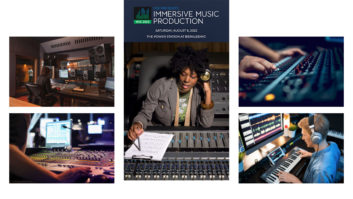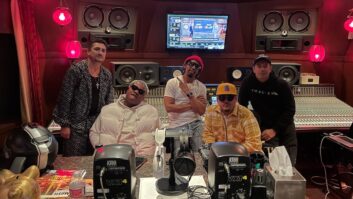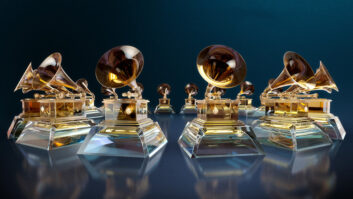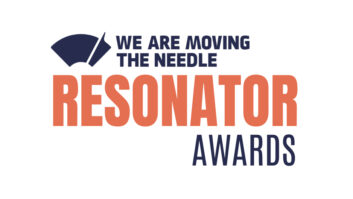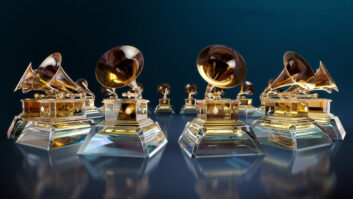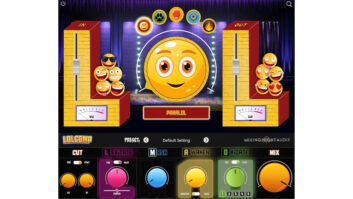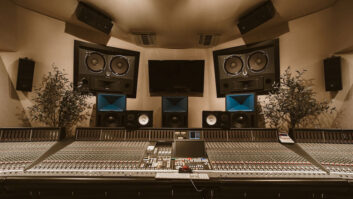Alicia Keys was probably born in high gear. The 21-year-old R&B singer/songwriter was singing Broadway tunes at age four and writing songs at 14. (One of her first compositions even appears on her debut album, Songs in A Minor.) A classically trained pianist, she studied choir at the Professional Performance Arts School in Manhattan; after graduating high school at age 16, two years early, she attended Columbia University for a mere four weeks before leaving to pursue her music career. Keys was approached by various record labels but eventually signed with Arista Records in 1998; a year later, she followed Arista founder Clive Davis (the legend credited with discovering such diverse artists as Janis Joplin, Bruce Springsteen and Whitney Houston) to his new label, J Records. Last year, Songs in A Minor debuted at Number One on the Billboard 200 Album Chart, and with both Video Music Awards and American Music Awards under her belt, six Grammy nominations and a movie deal in the works, there was no turning back. The high point came this February at the Grammys, where Keys took home five awards, including Best New Artist and Song of the Year (for “Fallin’”), Best R&B Song, Best Female R&B Vocal Performance and Best R&B Album. At last count, Songs in A Minor had reached worldwide sales of approximately 7 million.
Touring between awards shows, Keys has been appearing at mostly mid-sized venues (3,000 to 4,000 seats) and had completed 26 shows on the road since January by the time Mix caught the final night on the U.S. leg of her tour, at the Paramount Theatre in Oakland, Calif., in early March. Sound for the tour was provided by Clair Bros.
NO-FRILLS MONITORS
Monitors were mixed by Houston (Hause) Bowen, who’s toured with Alicia Keys for the past year. Bowen brings plenty of experience to the tour; he’s mixed for Mya, Usher, Faith Evans, Lauryn Hill, Taylor Dayne, Freddie Jackson, Chico DeBarge, The Chris Rock Show and Showtime at the Apollo. He has 12 stereo mixes on his Midas H3000: “In addition to Alicia on vocals and piano,” says Bowen, “there are three background singers, three horns [trumpet, alto sax and tenor sax], bass, guitar, keyboards, drums and a second percussionist.” The musicians are all on Future Sonics in-ear monitors (IEMs) with Shure wireless transmitters, with horn wedges and sidefills for the dancers and Freaky Nasty, a wild little guy who comes out on stage every now and then to work the crowd up.
Bowen says he is adding few effects to the monitor mixes. “[Alicia’s] mix has mostly her [voice and piano] in it, with rhythm guide track; I’m using gates and compression,” he explains. The same goes for the other musicians’ mixes: dynamics control, spare effects. Bowen says his biggest challenge on this tour has been dealing with RF interference in some states, but mostly he’s concentrating on helping keep the show tight: “I’m mostly focusing on keeping the rhythm section locked onstage,” he says.
BRINGING STUDIO SKILLS TO FOH
Originally hailing from the New York studio scene, FOH engineer Gregg Mann honed his mixing chops at the now-defunct Media Sound Studios in Manhattan before spending seven years at the Apollo Theatre, where he mixed everyone from Ray Charles to James Brown. He’s also worked with Angie Stone, Erykah Badu, Gladys Knight, Ornette Coleman and New Edition. Last June, Mann left his gig mixing for BET in order to tour with Keys.
For Mann, who’s also mixing on an H3000, vocals are king: “The thing that makes her show, the whole thing, is the vocals,” he says. “So, I’m constantly fighting to make sure her vocal and the background vocals are not behind the music, that they’re even or in front.” He also applies this philosophy to the backup singers: “Her backgrounds have to be right there with her; the way the musical arrangements work, they might be carrying the whole front part and she’s ad-libbing around it,” he says. “[Then] they’re actually the lead, and she’s like the ad-libber. And for that moment, if the backgrounds played the background role, it wouldn’t have a lot of feeling; it would be off. So I fight all night to make sure that the instruments are full and right there, but the vocals are never lost. Because the worst thing in the world is when you go to hear a group and you can’t hear the singers.”
Keys sings into a wireless Shure SM58. “She started on an 87 before I came onboard, but it was far too bright for her,” explains Mann, who notes that the 58’s warmer tone helps balance a slight boost in Keys’ voice around 2 kHz. Impressed by the Audio-Technica mics he had been using on awards shows, Mann was planning to try an Audio-Technica ATW 73X for the next leg of the tour. “The A-T’s bottom end meshes well with her high end,” he notes.
Mann is a big fan of the Manley VoxBox voice processor for compression. “I tried it on Alicia, and it’s perfect, because it has a mid cut and I can cut right at that 1k/2k area for her, just knock off a dB or two in that range, and it smoothes her out really well,” says Mann. He treats the three background singers similarly, running their 58s through a Summit stereo compressor.
Mann adds reverb to just about all of the musicians, but in small doses. “I’m using a Lexicon 480L, a PCM80, a PCM90, a Yamaha 990 — I have a lot of reverbs out there — but it might just be a little something here or there.” Other tricks? The Eventide H3000’s Micro Pitch Shift chorus effect gives the background vocals a slight double. And Mann shares an old studio trick that he uses on Keys’ vocals: “I use a very short delay on Alicia, a really short delay, like 125 ms, which is equivalent to a 15 ips tape slap. You never hear the delay, but it’s a little double, a thickener for her.”
THE “OTHER” STAR
Mann explains the mic setup for Keys’ piano: “We have a Countryman tape, it’s kind of like a contact mic; then I have two Sennheiser 421s in the sound hole, because the contact tape is really mid-heavy, and so I need something to give it top-end sparkle. So I use a combination of both, but I’d say it’s 75 percent contact tape and 25 percent 421s. I really like condenser mics on the piano, but the piano sort of came at the end of the tour — we had a Rhodes and other setups — and I felt dynamics were safe.” For the next leg of the tour, Mann says he’s going to try condenser mics on the piano.
Mann keeps Keys’ piano sound natural, touching it up with a dbx compressor and the Midas’ onboard EQ. “There’s compression and straight-ahead EQ — I don’t use any effects,” he says. “I don’t even use reverb, because most of the time, the rooms have their own natural ambience to them, and if it doesn’t, then I’ll put a little bit of reverb, but most of the time I don’t.”
EVEN P.A. COVERAGE
Providing the best listening experience possible for everyone in the audience can be especially challenging in some mid-sized theaters with large overhangs, like the Paramount, where Mann’s FOH position is against the back wall, underneath a long, shallow overhang. “I cannot make it sound in my face [at FOH] and not hurt the people in the first 20 rows,” he says. “As far as this hall is concerned, it has a low-end kind of rumble going on because of its dome-type ceiling. The overhang kills all of the high end and the presence for me. But if I walk five rows from my position, all of the high end starts to come back, and it sounds great. And you go all the way forward and you start to really get it, and everything’s there.”
As configured for the Alicia Keys tour, the Clair Bros. I-4 line array system includes four “5 degree” and four “10 degree” cabinets per side (five and ten degrees being the cabinets’ vertical dispersion pattern; horizontal dispersion is a uniform 90 degrees). In addition, four I-4b cabinets and two S-4 subwoofer cabinets per side are available for supplemental low end. Amplifiers included Crest 10004, QSC 9.0, and Crown MacroTech models.
“The reason we’re carrying both the I-4b and S-4 sub cabinets is the wide ranging size and shapes of the theaters we’ve encountered on this leg of the tour,” explains Clair Bros. systems engineer Dave Skaff. “When space is at a premium, the I-4bs, which are normally flown, become the platform for four to five I-4 cabinets. It’s quite a lot of P.A. in a very small package!”
“I’ve found that the system covers all the spaces evenly,” adds Mann. “Fundamentally, it’s giving me a full range of coverage throughout the spectrum. It’s working like a home unit; you can have a smaller system, it doesn’t have to be a wall of speakers any more.”
Mann seems to speak for everyone on tour when he talks about what the future holds for Alicia Keys: “I think there are going to be some big moments coming,” he says. “I’ve seen the growth already, and then I think the next level’s going to be incredible. The best is ahead.”
Sarah Jones is a technical editor at Mix.

